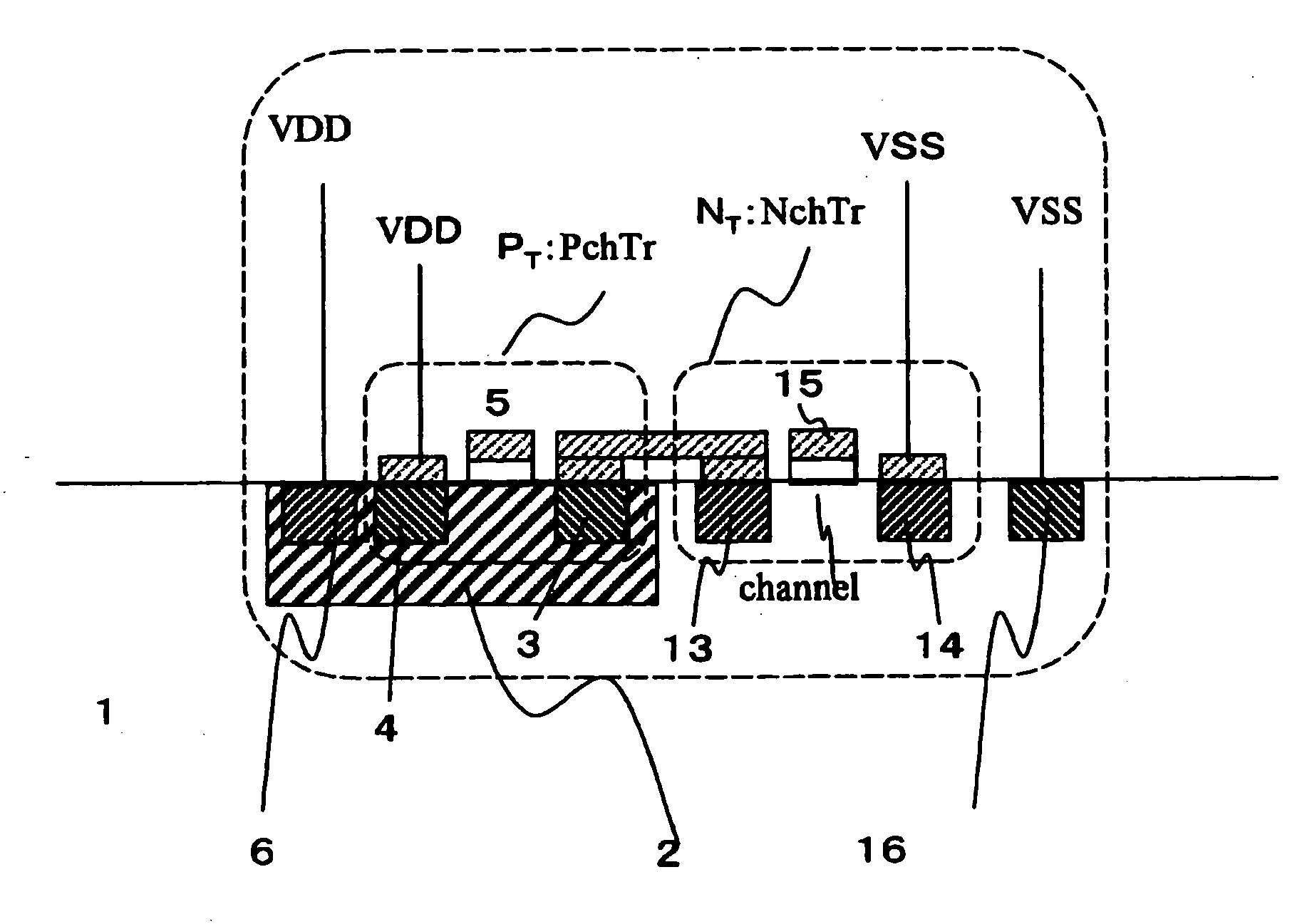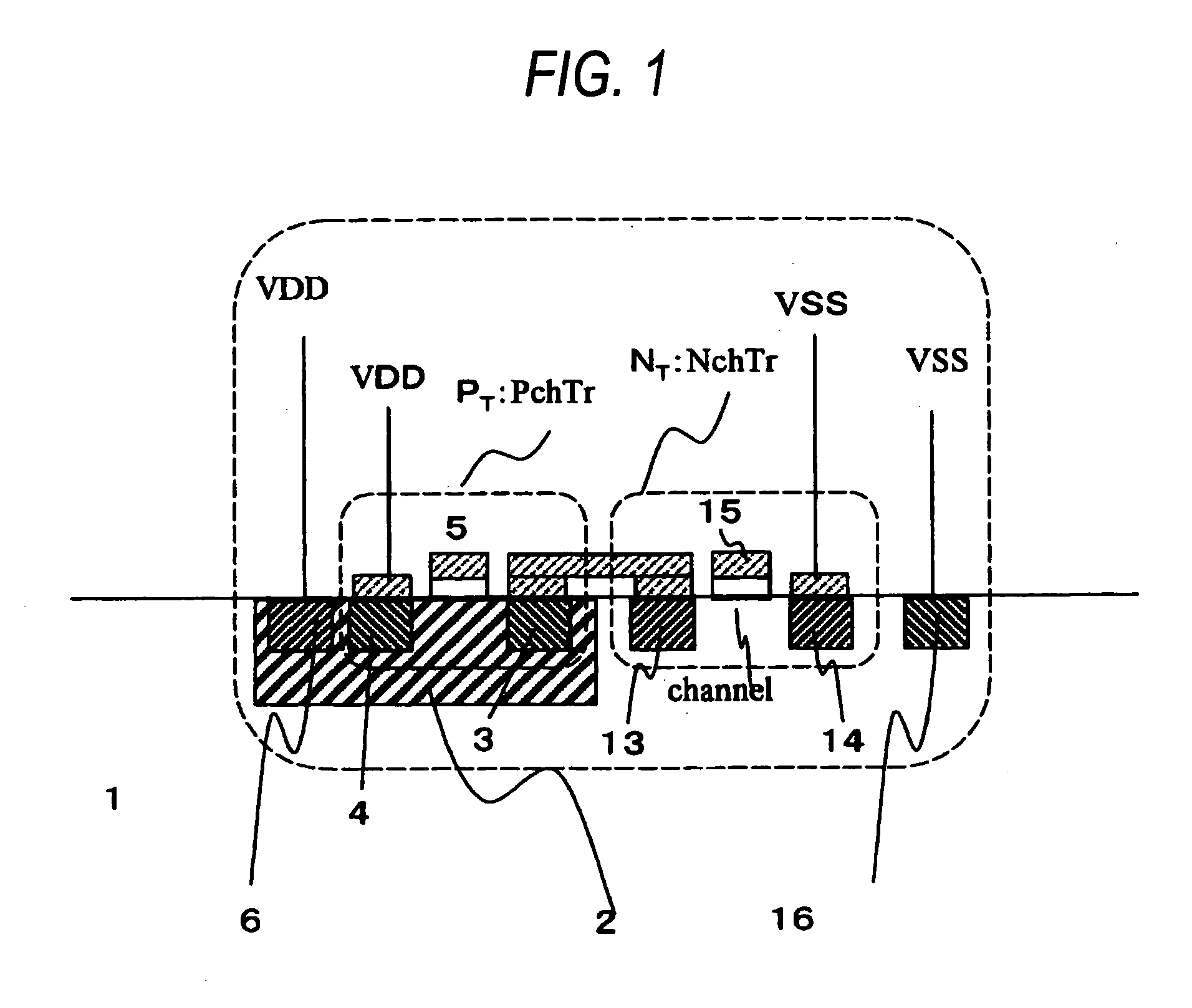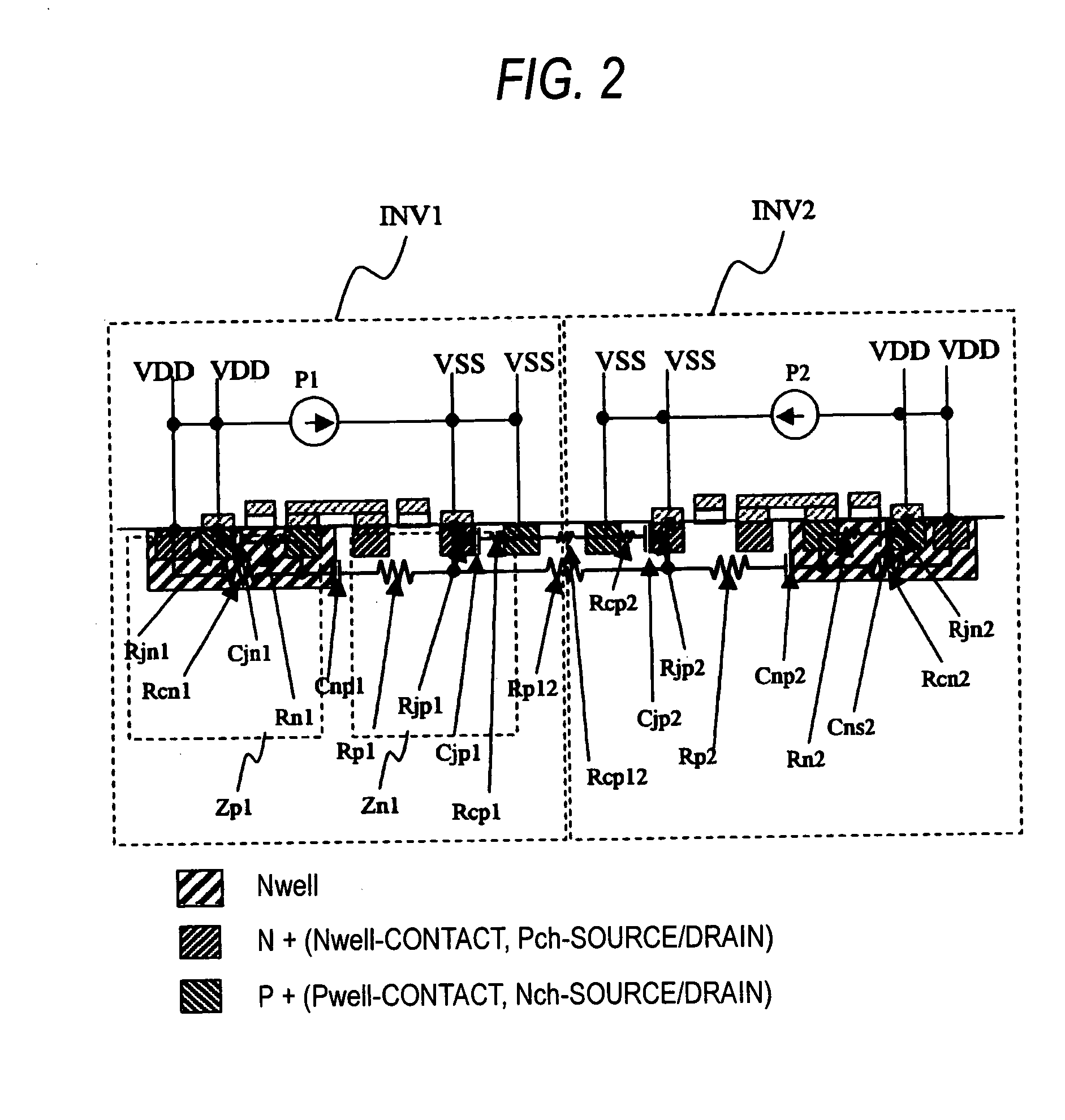Method of analyzing operation of semiconductor integrated circuit device, analyzing apparatus used in the same, and optimization designing method using the same
- Summary
- Abstract
- Description
- Claims
- Application Information
AI Technical Summary
Benefits of technology
Problems solved by technology
Method used
Image
Examples
first embodiment
[0093] (First Embodiment)
[0094] FIGS. 1 to 3 are principle diagrams showing a procedure for analyzing a power noise according to the embodiment.
[0095] A method of analyzing a power noise of a semiconductor integrated circuit according to the embodiment of the invention is characterized in that a transistor is replaced with a current source Ps as in a related analyzing method (see FIG. 25), and furthermore, a semiconductor integrated circuit including a transistor shown in FIG. 1 is analyzed by using a model considering the impedance of a substrate (structures provided under a metal layer, for example, a P-type substrate or an N-type substrate, a well and a diffusion region are generally referred to as the substrate) as shown in FIG. 2. More specifically, the method is characterized in that modeling is carried out as a combination of an N-type diffusion resistance Rjn, a P-type diffusion resistance Rjp, a junction capacitance Cjn of an N-type diffusion region, a junction capacitance...
second embodiment
[0112] (Second Embodiment)
[0113] Next, description will be given to an example in which the inside of a substrate is divided into meshes and modeling is carried out by an equivalent circuit according to a second embodiment of the invention.
[0114] While the description has been given to the example in which the diffusion regions are connected through the equivalent RC net in the first embodiment, description will be given to an example in which the substrate is divided into three-dimensional meshes to carry out the modeling in the embodiment.
[0115]FIG. 6 is a flowchart showing the embodiment, and FIG. 7 is a diagram in which the impedance of the substrate 1 (see FIG. 1) used in the first embodiment is divided into meshes and is thus modeled.
[0116] Layout information 501 is used for circuit information as shown in FIG. 5 and an impedance is calculated for each mesh by substrate mesh impedance calculating means 502, thereby forming a substrate net list 503. A broken line in an N wel...
third embodiment
[0122] (Third Embodiment)
[0123] In a third embodiment according to the invention, next, description will be given to a method of analyzing a power noise in which a division into meshes is carried out on the basis of a contact position, thereby performing modeling. In this example, the division into meshes is carried out on the basis of the contact position, thereby performing the modeling in place of modeling between points as shown in an explanatory diagram of FIG. 8.
[0124] A division into meshes passing through a contact 6 (a point P1) to an N well 2 and a contact 16 (a point P2) to a P substrate is carried out to perform the modeling.
[0125] For example, a contact is formed in the position of a diffusion region on the basis of the position of the diffusion region in many cases. Therefore, it is possible to easily carry out an analysis on the basis of the contact position.
[0126] When the contact is thus set to be the basis, moreover, existing means such as an LPE tool can easily...
PUM
 Login to View More
Login to View More Abstract
Description
Claims
Application Information
 Login to View More
Login to View More - R&D
- Intellectual Property
- Life Sciences
- Materials
- Tech Scout
- Unparalleled Data Quality
- Higher Quality Content
- 60% Fewer Hallucinations
Browse by: Latest US Patents, China's latest patents, Technical Efficacy Thesaurus, Application Domain, Technology Topic, Popular Technical Reports.
© 2025 PatSnap. All rights reserved.Legal|Privacy policy|Modern Slavery Act Transparency Statement|Sitemap|About US| Contact US: help@patsnap.com



